Modern artists usually favor two kinds of mediums for putting life into their fabulous creation, that is, Graphite and Charcoal. In this quick description, we analyze the two commonly used methods, thereby, enlisting the pros and cons of both.
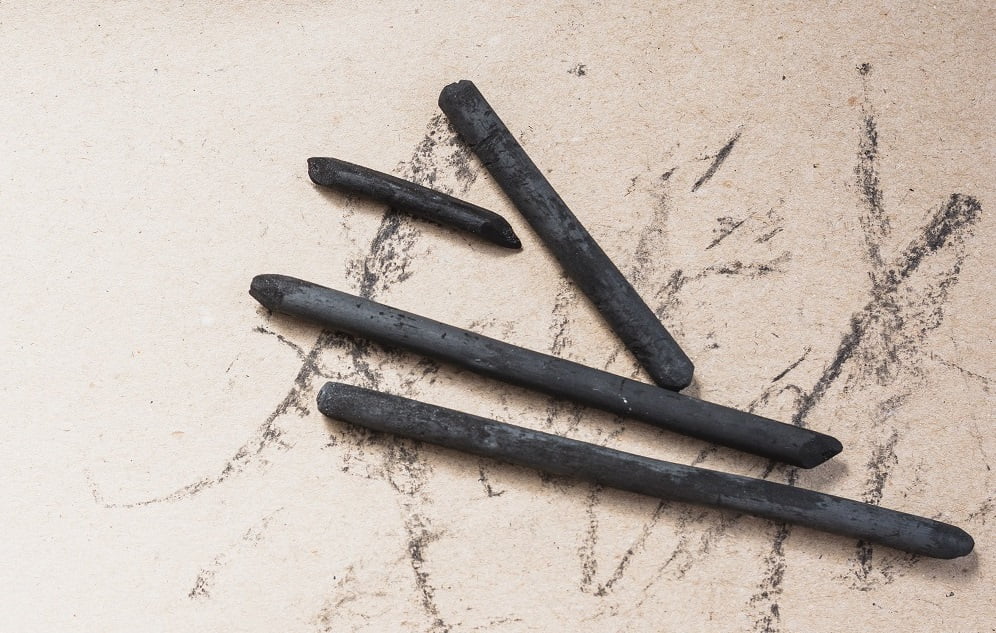
If we look back at history briefly, the assumption that ‘Lead’ was used as a material for pencils was prevalent during that age. The fact is, real lead wasn't used in the pencils. Lead, essentially, is a toxic material. Therefore, its use was strictly banned henceforth.
Chemically, both Graphite and Charcoal originate from the same element, Carbon. Graphite is an isotope of Carbon, i.e., two different forms of compounds coming from the same element.
The hexagonal molecular structure allows lesser friction, causing ease in sliding movements. This is also one of the reasons why graphite is used as lubricants. Without going into the scientific details, we must enlighten you with the distinctions.
Therefore, the question which pops up in mind instantly: ‘What is the difference between the two?’; or ‘Which one should I use for my sketches?’. This also because - both look the same, like a pencil, yet are different in so many ways.
The answer is simple. The two are differentiated according to requirement, specification, and application. So without further ado, let us delve into the nitty-gritty of the two media of drawing.
Graphite vs. Charcoal
Graphite | How is it used?
The core of pencils is usually made up of graphite which is coupled with binders that make the pencils structurally hard. Sketches can attain thinner lines with more binders in the mixtures, apart from obtaining lighter shades.
On the contrary, lesser the number of binders, softer the graphite will be. As a result, the shades will be thicker and darker. The terminology of pencil shades, according to hardness, darkness, and lightness, is done with the help of a combination of letters, with numbers in the prefix.

The various shades lie in the range of 9H to 9B*, with 9H being the lightest and 9B* the darkest. Generally, the range of graphite pencil kit lies between 2H or HB to 6B.
That said, it is also essential to know that not all pencils within the range of 9H to 9B* are necessary for artists. Range in between HB-6B is more than sufficient for most.
Interestingly, some of the artists manage to sketch using only two or three types of shades. In cases of spontaneous actions, working on smooth paper remains ideal for graphite pencils.
Graphite works best for paper below the dimensions of 9 x 12 as we are dealing with pencil which finds it difficult to mark large areas. Even woodless graphite pencils are of excellent quality but do not obtain a high marking area in the paper.
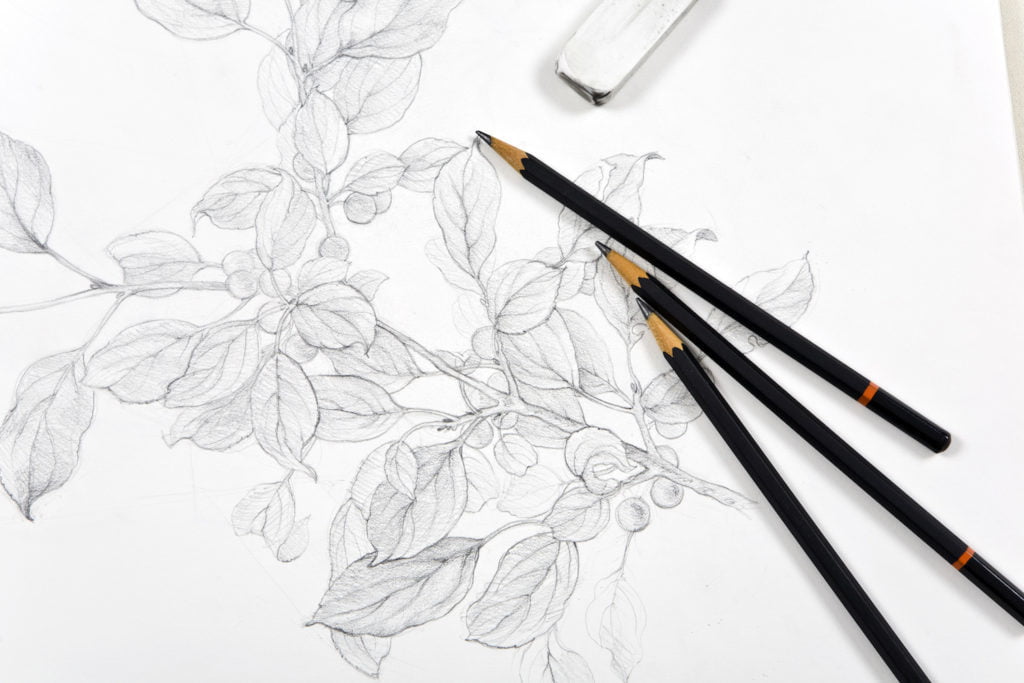
Additionally, if pressed hard, graphite pencil produces an unwanted glare, which makes it difficult to be photographed. Time-consuming fix for this problem is by layering the darker areas with darker shades of pencil.
- Using Graphite pencil does not allow any form of smudge or mess to creep into your work
- Ideal for beginners, or sketches in small, confined areas
- Graphite pencil works are often time-consuming. This is due to the fact that it takes time and effort to cover large areas of the paper
- These pencils produce an undesirable shine which downgrades the appearance in several ways
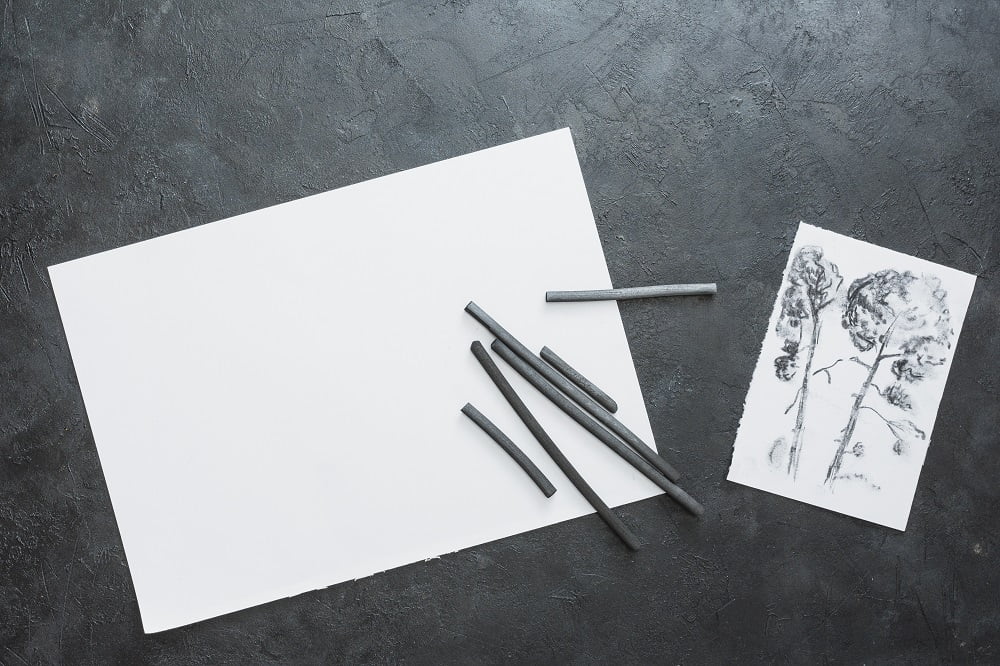
Charcoal | How is it used?
Charcoal is a product formed by burning wood, which is primarily made up of Carbon, like graphite. Drawing similarities from graphite, lighter the charcoal, darker will be the shade, while harder the charcoal, lighter will be the shade.
Primarily, the two forms of charcoal are - sticks and pencils. Also, the powdered charcoal is blended along with resins and clay, which is then pushed into the pencil core. Willow Coal, synonymous with Soft Vine, is the best-known type of charcoal when it comes to quality.
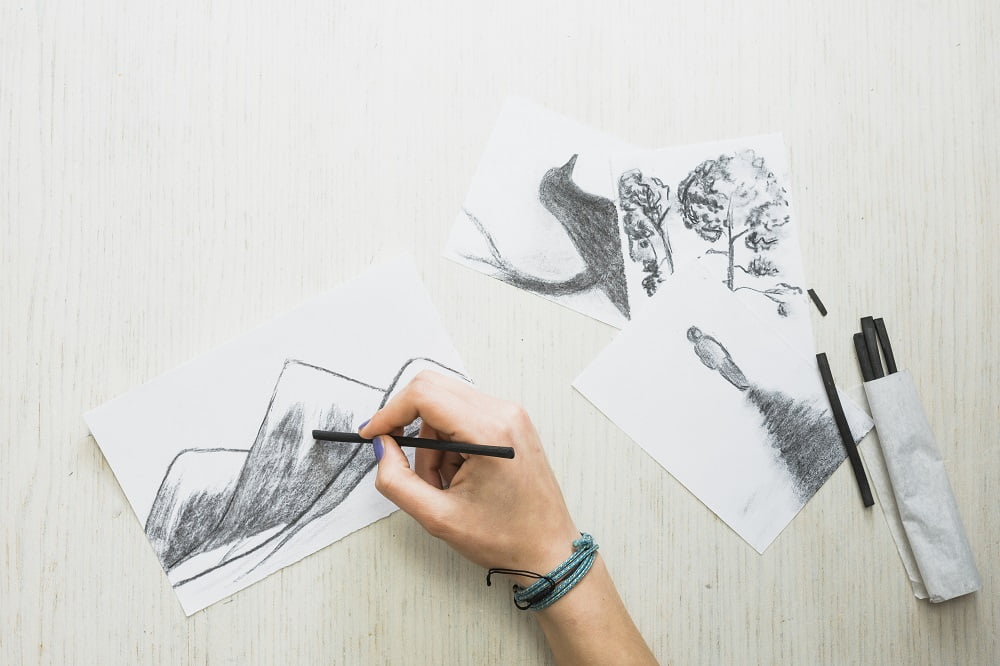
Much like in the case of graphite, charcoal pencil shades range from HB to 6B. However, the one unique quality of charcoal is that the sketch artist can rotate the sticks to manipulate different forms of line thickness and styles.
Many a time, artists prefer soft consistencies of charcoal due to the ease with which it fans out, creating almost the perfect blend. Similarities of sketch work using charcoal can be drawn with oil paintings, due to the smoothness of area coverage. All you have to do is place a stick on its periphery, in order to cover large areas at one go.
Also, drawing with charcoal remains ideal for beginners as the work is easily erasable, nullifying errors. Flawless work using charcoal pencils can be achieved by using textured paper, which also remains suitable for drawings over large areas.
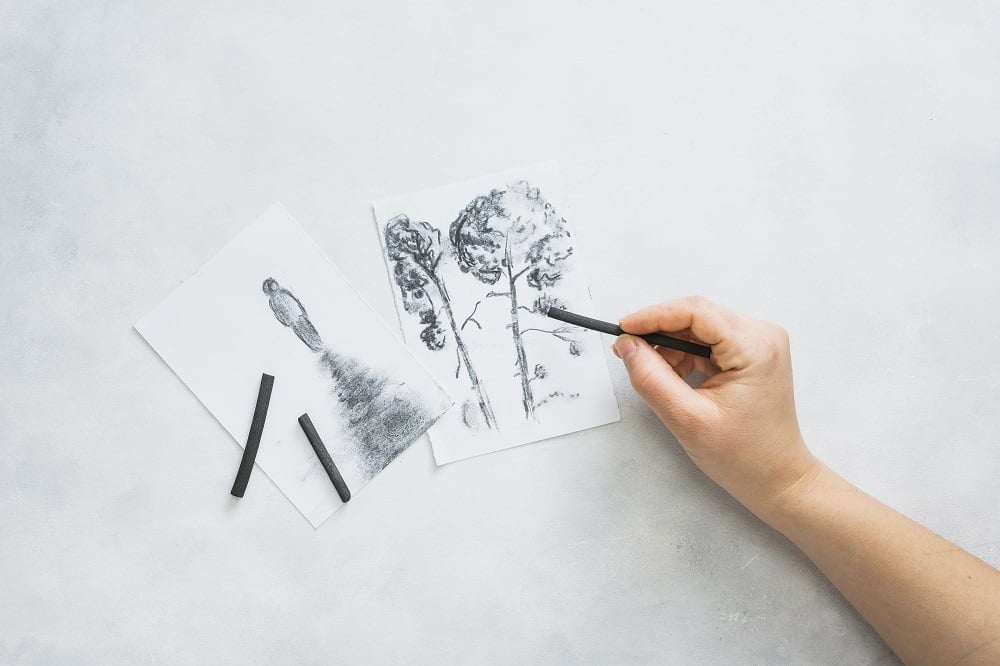
Furthermore, it is observed that using charcoals in drawing creates lots of fuss and mess. If not appropriately acclimatized, pictures tend to create a lot of smudges. Further, imprints from fingers can easily be traced on the work, if not dealt with caution.
Additionally, the use of charcoal pencils do not promote fine-drawing as the surface area of contact is larger.
- Faster mode of drawing, when compared to graphite
- Less time-consuming and optimal for large area drawings
- Obtaining drawings with darker shade is much more comfortable
- Heavy strokes coupled with a large contact area with paper, meaning bolder sketches compared to graphite
- Working with these types of pencils induces smudge marks and fingerprints all over the paper
- Also, a heavy charcoal pencil kit does not help with its mobility
- Need for caution is a must using this type of tool
With the detailed discussions above, it can be safely assumed that both Graphite and Charcoal have their own sets of uses, benefits, applications, pros, and cons. Therefore, it is absolutely up to the personal choice of artists to make a desirable piece of art.
